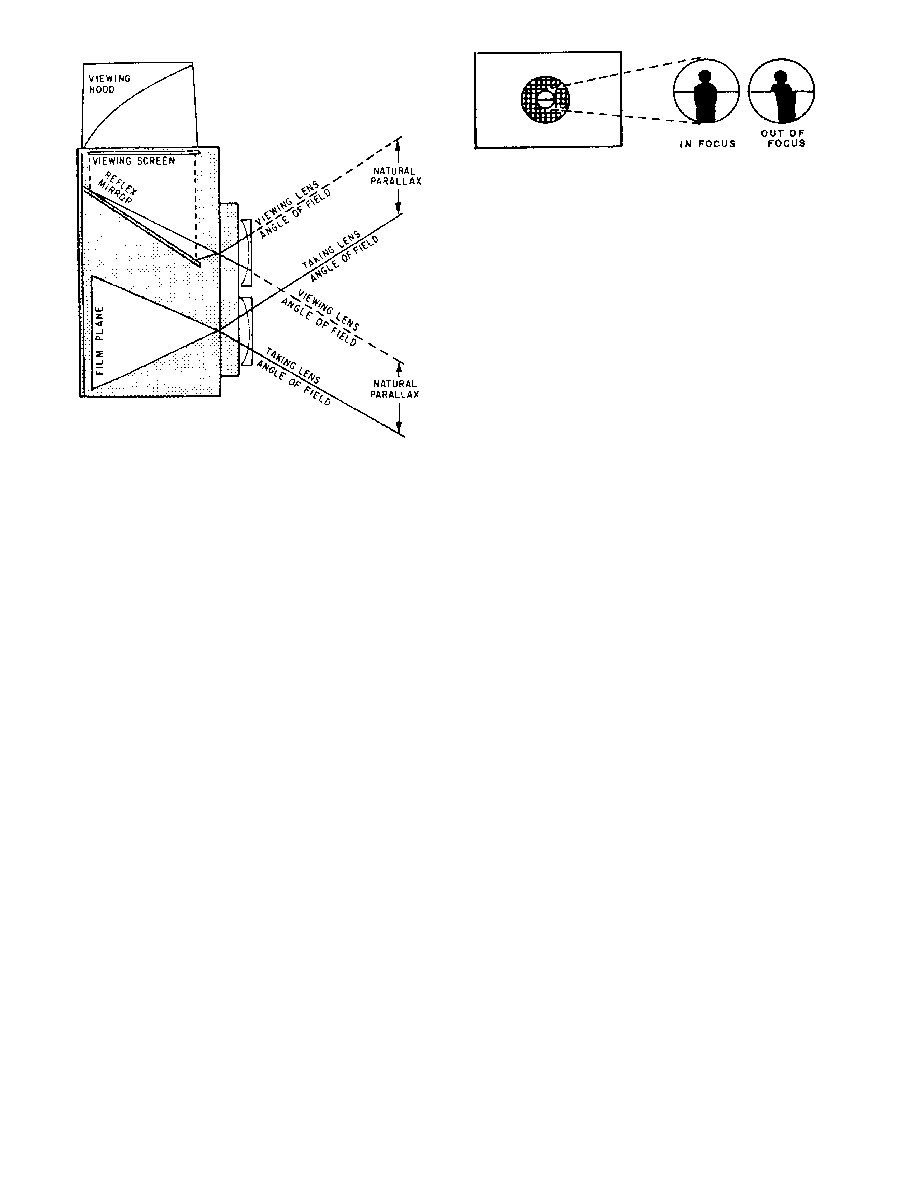
DOFMaster
for Windows
On-line
Depth of Field
Calculator
DOFMaster for Mobile Devices
On-line
Depth of Field
Table
Hyperfocal
Distance Chart
Articles
FAQ
Recommended
Books
Support
Contact
Links
Home
for Windows
On-line
Depth of Field
Calculator
DOFMaster for Mobile Devices
On-line
Depth of Field
Table
Hyperfocal
Distance Chart
Articles
FAQ
Recommended
Books
Support
Contact
Links
Home
As an Amazon Associate I earn from qualifying purchases.
![]()
the lens forms the image on a mirror that reflects the
image to the focusing screen or ground glass.
and viewing. One lens is the viewing lens; the other is
the picture-taking lens. The viewing lens is always wide
open. That makes focusing and viewing easy, but depth
of field cannot be viewed. Depth of field must be
determined by a scale that is provided on the lens or
camera body.
the difference between the image seen through the
viewing lens and the image transmitted to the
picture-taking lens (fig. 4-8). For distant subjects the
difference is not very great or noticeable; however,
when your subject is close to the camera, parallax is
much more noticeable. You see a different image area
through the viewing lens than what is being transmitted
through the picture-taking lens. Some twin-lens reflex
cameras have an indicator in the viewing lens, so you
can compensate for parallax. Another disadvantage of
the twin-lens reflex camera is that it takes practice to
on the focusing screen is backwards from the actual
image. Twin-lens reflex cameras are no longer
commonly used in Navy imaging, but they are still
around.
shows you the image formed by the picture-taking lens.
SLR cameras are designed so the distance between the
focusing screen and the lens is exactly the same as the
distance between the lens and the film; therefore,
whatever appears in focus on the focusing screen will
also be recorded in focus on the film. With an SLR
camera, there is no parallax error.
screen. When the image is out of focus, it appears split
in this area (fig. 4-9). Some screens have a central grid
of minute prisms that produce a shimmering effect when
the image is out of focus.
viewfinder is in sharp focus. SLR cameras are the most
commonly used camera in Navy imaging today.
the subject is in focus on the film plane. This system has
a coupled range finder optical device that is linked to the
focusing ring. To focus a direct-vision coincidence or
split-image range finder camera, you must align two
separate images of the subject. When looking through
the camera viewfinder, you see a pale or tinted area in
the center of the viewing window. This area shows the
double image. To set the correct focus, you aim the
camera so the subject you want in sharpest focus is in
the pale area. You then turn the lens focus ring, or camera
Basic Photography Course

As an Amazon Associate I earn from qualifying purchases.
WWW.DOFMASTER.COM
© 2006 Don Fleming. All rights reserved.
© 2006 Don Fleming. All rights reserved.